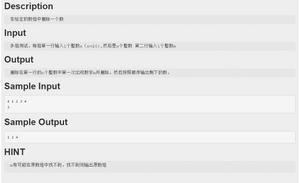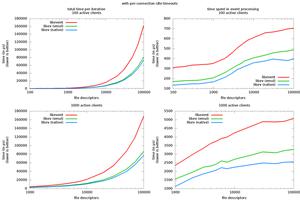C中FILE的数据类型是什么?
在C语言中,我们使用了文件。要处理文件,我们使用FILE类型的指针。因此,FILE是一种数据类型。这称为不透明数据类型。因此其实现是隐藏的。FILE的定义是系统特定的。这是Ubuntu系统中FILE的定义-
文件定义
struct _IO_FILE { int _flags; /* High-order word is _IO_MAGIC; rest is flags. */
#define _IO_file_flags _flags
/* The following pointers correspond to the C++ streambuf protocol. */
/* Note: Tk uses the _IO_read_ptr and _IO_read_end fields directly. */
char* _IO_read_ptr; /* Current read pointer */
char* _IO_read_end; /* End of get area. */
char* _IO_read_base; /* Start of putback+get area. */
char* _IO_write_base; /* Start of put area. */
char* _IO_write_ptr; /* Current put pointer. */
char* _IO_write_end; /* End of put area. */
char* _IO_buf_base; /* Start of reserve area. */
char* _IO_buf_end; /* End of reserve area. */
/* The following fields are used to support backing up and undo. */
char *_IO_save_base; /* Pointer to start of non-current get area. */
char *_IO_backup_base; /* Pointer to first valid character of backup area */
char *_IO_save_end; /* Pointer to end of non-current get area. */
struct _IO_marker *_markers;
struct _IO_FILE *_chain;
int _fileno;
#if 0
int _blksize;
#else
int _flags2;
#endif
_IO_off_t _old_offset; /* This used to be _offset but it's too small. */
#define __HAVE_COLUMN /* temporary */
/* 1+column number of pbase(); 0 is unknown. */
unsigned short _cur_column;
signed char _vtable_offset;
char _shortbuf[1];
/* char* _save_gptr; char* _save_egptr; */
_IO_lock_t *_lock;
#ifdef _IO_USE_OLD_IO_FILE
};
struct _IO_FILE_complete
{
struct _IO_FILE _file;
#endif
#if defined _G_IO_IO_FILE_VERSION && _G_IO_IO_FILE_VERSION == 0x20001
_IO_off64_t _offset;
# if defined _LIBC || defined _GLIBCPP_USE_WCHAR_T
/* Wide character stream stuff. */
struct _IO_codecvt *_codecvt;
struct _IO_wide_data *_wide_data;
struct _IO_FILE *_freeres_list;
void *_freeres_buf;
size_t _freeres_size;
# else
void *__pad1;
void *__pad2;
void *__pad3;
void *__pad4;
size_t __pad5;
# endif
int _mode;
/* Make sure we don't get into trouble again. */
char _unused2[15 * sizeof (int) - 4 * sizeof (void *) - sizeof (size_t)];
#endif
};
现在让我们看一个使用FILE的例子。
Text file (/tmp/test.txt):This
is testing for fprintf...
This is testing for fputs...
示例
#include <stdio.h>main() {
FILE *fp;
char buff[255];
fp = fopen("/tmp/test.txt", "r");
fscanf(fp, "%s", buff);
printf("1 : %s\n", buff );
fgets(buff, 255, (FILE*)fp);
printf("2: %s\n", buff );
fgets(buff, 255, (FILE*)fp);
printf("3: %s\n", buff );
fclose(fp);
}
输出结果
1 : This2: is testing for fprintf...
3: This is testing for fputs...
以上是 C中FILE的数据类型是什么? 的全部内容, 来源链接: utcz.com/z/354352.html





